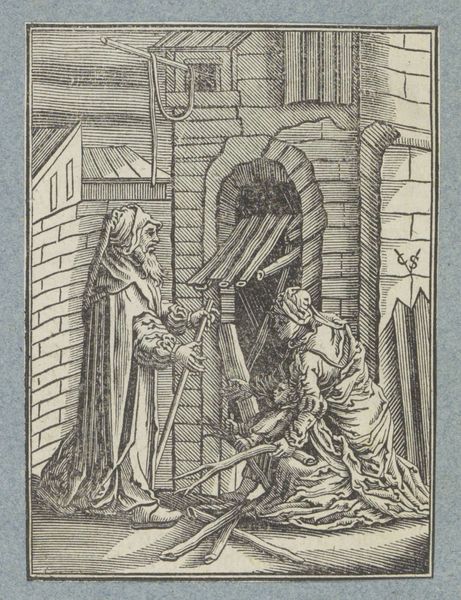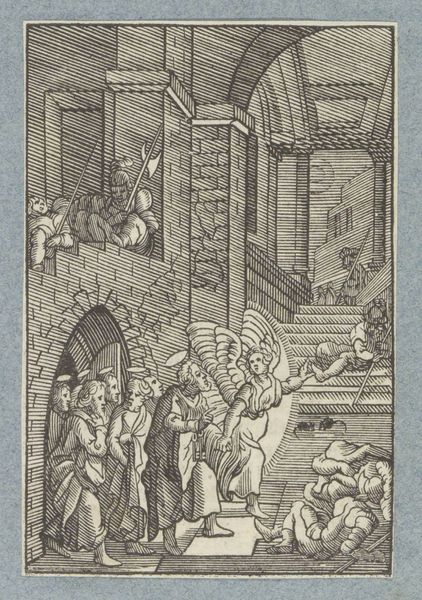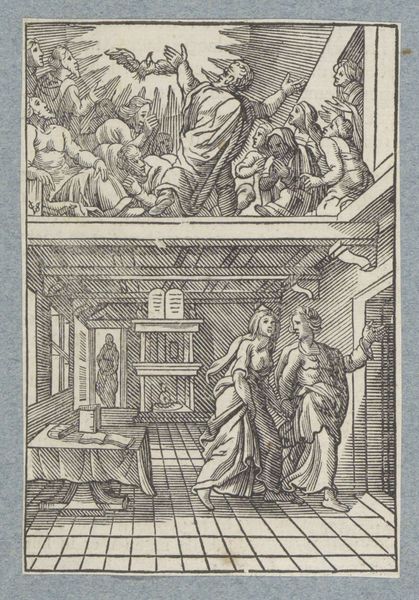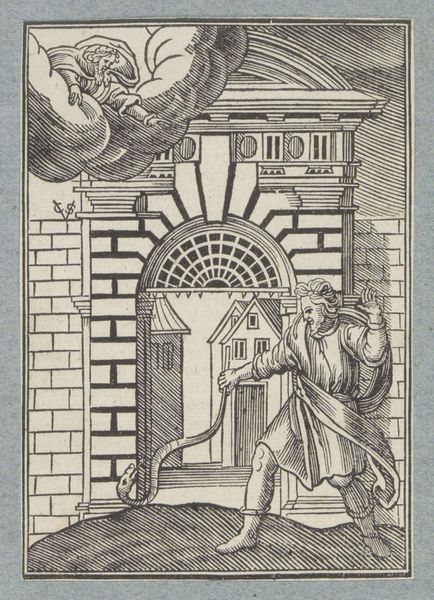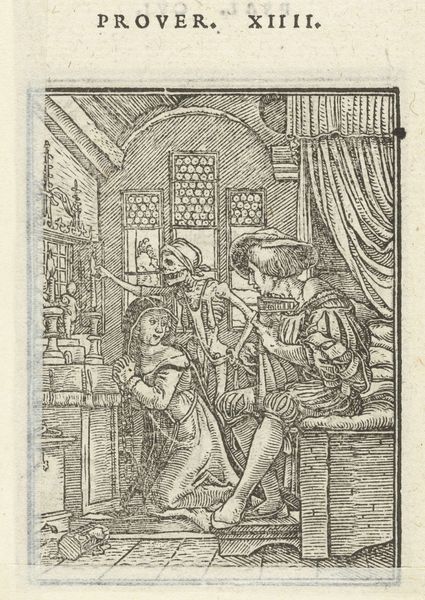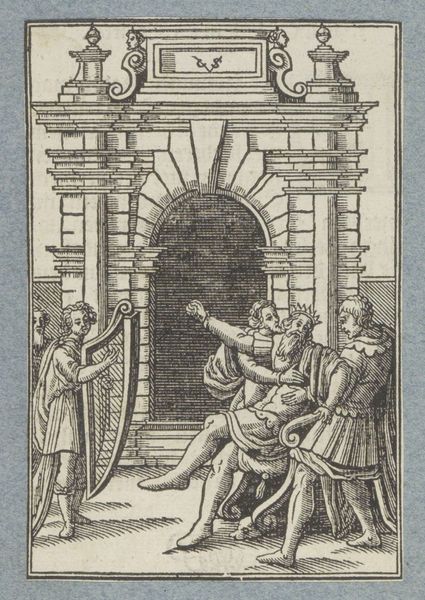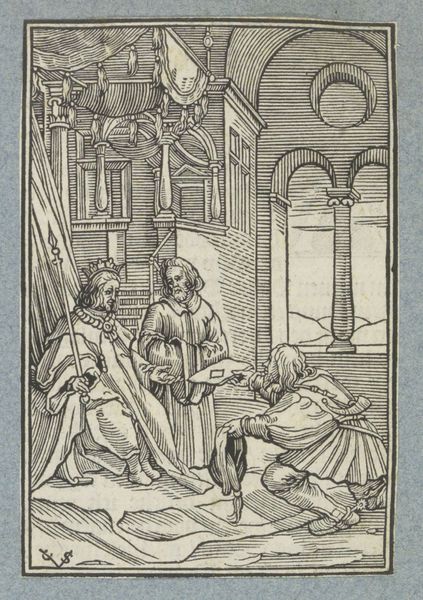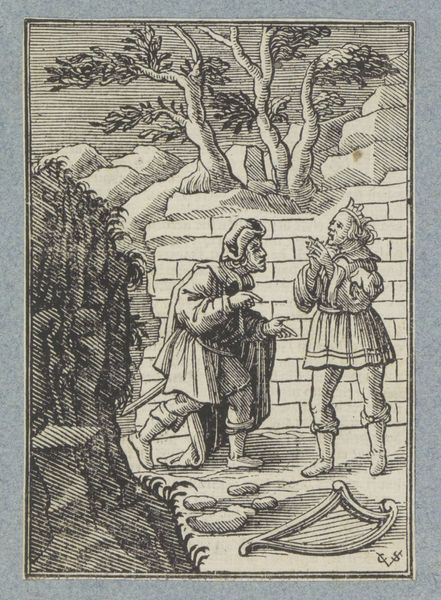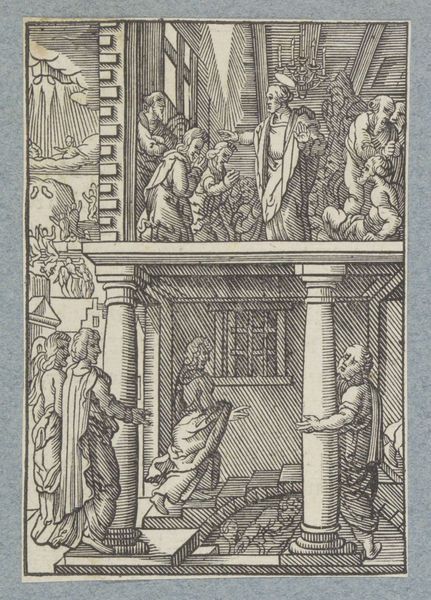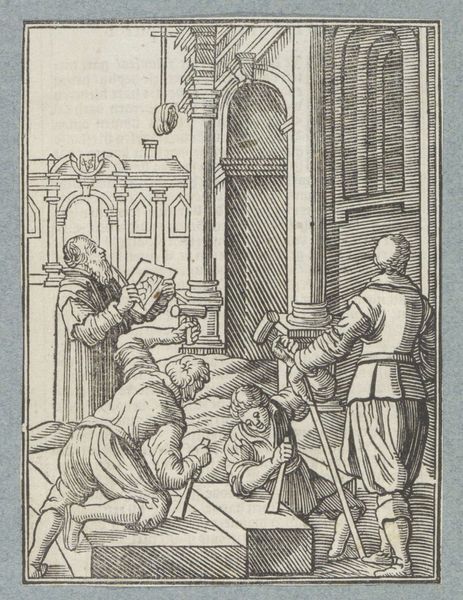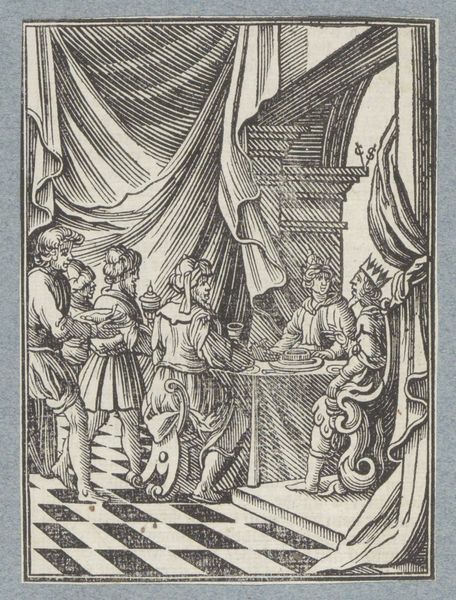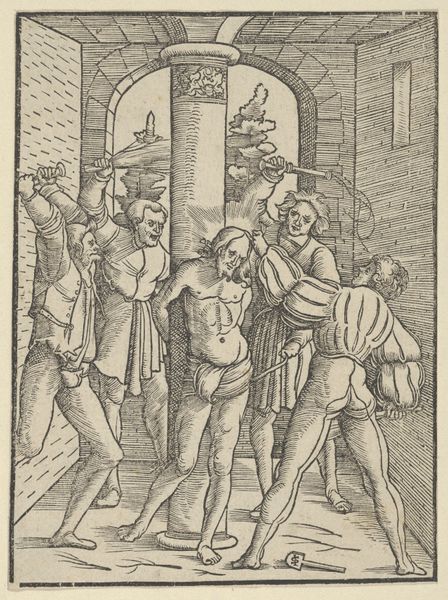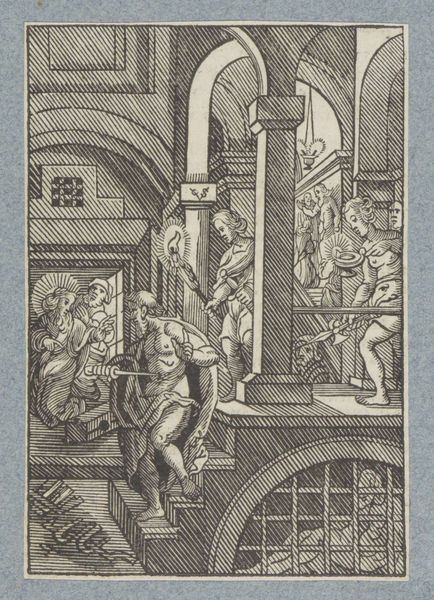
engraving
#
baroque
#
figuration
#
line
#
history-painting
#
engraving
Dimensions: height 115 mm, width 86 mm
Copyright: Rijks Museum: Open Domain
Curator: Here we have Christoffel van Sichem the Younger's "David Sends Uriah Away," an engraving completed around 1645-1646, now residing in the Rijksmuseum. The stark black and white immediately creates a scene of intense drama, doesn’t it? Editor: It does. The rigid lines, almost architectural in their precision, amplify that drama. I find the checkered floor particularly striking. It provides an unsettling visual foundation. Curator: Precisely. Contextually, the image portrays King David sending Uriah to his death. The visual choices reflect the era's perspectives on power, morality, and the dynamics of leadership and accountability. What do you see in the body language of the figures? Editor: The King appears diminished, slumped in his throne, pointing dismissively, while Uriah, the soldier, seems strong, despite the death sentence he unwittingly carries. His elaborate attire, detailed rendering, signifies importance, yet he is a pawn in the King’s machinations. Curator: Sichem’s mastery of line creates not just forms, but also hierarchies. Uriah, caught in a situation crafted by patriarchal power, emphasizes the historical lack of agency experienced by individuals against powerful institutions. It serves as a potent illustration of unequal power dynamics. Editor: Indeed. If we look closer at the engravings we notice how the stark contrast further accentuates the inequity. The King seems shrouded in shadow, whereas the light falls squarely on Uriah. It is interesting how these formal properties can also signal narrative intention. Curator: And beyond the technique, the history itself asks us to consider how leaders misuse their power. It resonates even today. How does such a narrative persist and echo through time in different societal contexts? Editor: In the end, despite its medium and age, the piece still communicates volumes. It is really striking how a set of lines can lead us down complex and profound narratives.
Comments
No comments
Be the first to comment and join the conversation on the ultimate creative platform.
